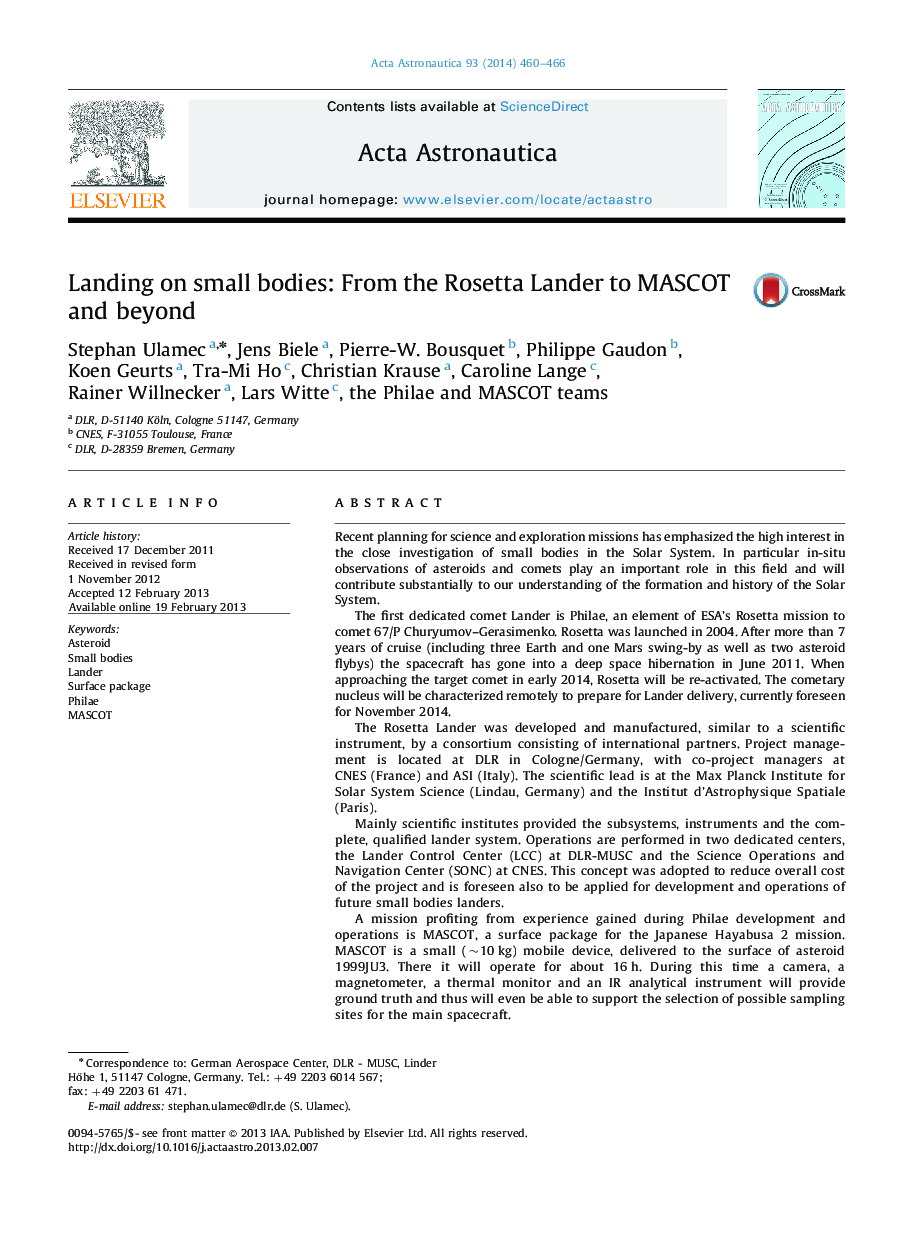| کد مقاله | کد نشریه | سال انتشار | مقاله انگلیسی | نسخه تمام متن |
|---|---|---|---|---|
| 1714903 | 1519958 | 2014 | 7 صفحه PDF | دانلود رایگان |
Recent planning for science and exploration missions has emphasized the high interest in the close investigation of small bodies in the Solar System. In particular in-situ observations of asteroids and comets play an important role in this field and will contribute substantially to our understanding of the formation and history of the Solar System.The first dedicated comet Lander is Philae, an element of ESA's Rosetta mission to comet 67/P Churyumov–Gerasimenko. Rosetta was launched in 2004. After more than 7 years of cruise (including three Earth and one Mars swing-by as well as two asteroid flybys) the spacecraft has gone into a deep space hibernation in June 2011. When approaching the target comet in early 2014, Rosetta will be re-activated. The cometary nucleus will be characterized remotely to prepare for Lander delivery, currently foreseen for November 2014.The Rosetta Lander was developed and manufactured, similar to a scientific instrument, by a consortium consisting of international partners. Project management is located at DLR in Cologne/Germany, with co-project managers at CNES (France) and ASI (Italy). The scientific lead is at the Max Planck Institute for Solar System Science (Lindau, Germany) and the Institut d'Astrophysique Spatiale (Paris).Mainly scientific institutes provided the subsystems, instruments and the complete, qualified lander system. Operations are performed in two dedicated centers, the Lander Control Center (LCC) at DLR-MUSC and the Science Operations and Navigation Center (SONC) at CNES. This concept was adopted to reduce overall cost of the project and is foreseen also to be applied for development and operations of future small bodies landers.A mission profiting from experience gained during Philae development and operations is MASCOT, a surface package for the Japanese Hayabusa 2 mission. MASCOT is a small (∼10 kg) mobile device, delivered to the surface of asteroid 1999JU3. There it will operate for about 16 h. During this time a camera, a magnetometer, a thermal monitor and an IR analytical instrument will provide ground truth and thus will even be able to support the selection of possible sampling sites for the main spacecraft.MASCOT is a flexible design that can be adapted to a wide range of missions and possible target bodies. Also the payload is flexible to some extent (with an overall mass in the 3 kg range). For example, the surface package is part of the optional strawman payload for MarcoPolo-R, a European asteroid sample return mission, proposed for ESA Cosmic Vision M-class.
► In this paper we give an overview of the Rosetta Lander, Philae, currently on its way to comet 67P/Churyumov Gerasimenko.
► We present the design and mission scenario of MASCOT, a surface package for the Hayabusa 2 mission.
► Possible applications for further, future landers on small bodies are discussed.
Journal: Acta Astronautica - Volume 93, January 2014, Pages 460–466
